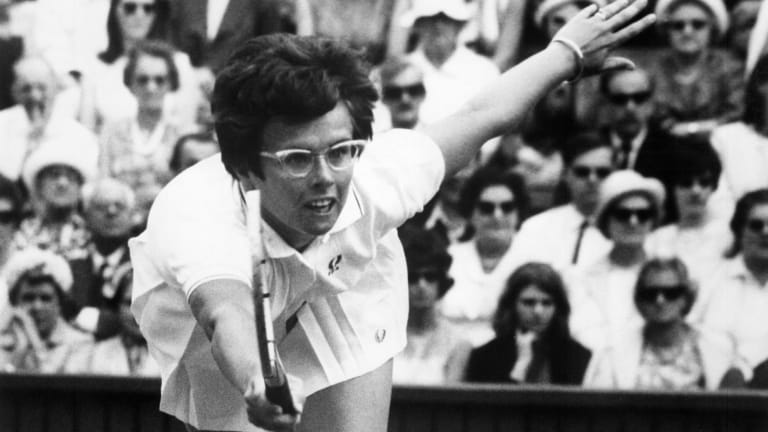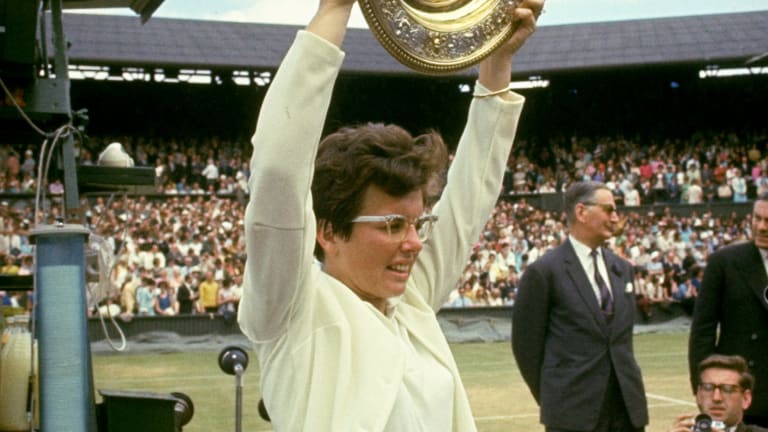1968: At the first open Wimbledon, Billie Jean King receives her first winner’s check—and notices a “big difference” with her male counterparts
By Jun 18, 2022Serena Williams' energetic return to Centre Court after a year away from the game was a brave effort, and one worthy of her legend
By Jun 29, 20222009: The first full match under Centre Court's roof showcased British tennis' newest Wimbledon title contender, Andy Murray
By Jun 23, 20222008: Rafael Nadal and Roger Federer produced a quantum leap in quality and entertainment in their classic, daylong final
By Jun 22, 20222007: After fighting for pay equity at Wimbledon, Venus Williams became the first woman to collect an equal-sized champion’s check
By Jun 21, 20221980: The five-set final between Bjorn Borg and John McEnroe was the pinnacle of their rivalry—and the Woodstock of their tennis era
By Jun 20, 20221975: In defeating a seemingly invincible Jimmy Connors, Arthur Ashe showed that with enough thought and courage, anyone in tennis can be beaten
By Jun 19, 20221967: With the Wimbledon Pro event, professional tennis finally comes to the amateur game’s most hallowed lawn
By Jun 17, 20221957: “At last! At last!” Althea Gibson fulfilled her destiny at Wimbledon, and with every win she opened up the sport a little wider
By Jun 16, 20221937: With a World War looming and one man playing for his life, Don Budge and Baron Gottfried von Cramm stage a Davis Cup decider for the ages
By Jun 15, 20221968: At the first open Wimbledon, Billie Jean King receives her first winner’s check—and notices a “big difference” with her male counterparts
Instead of male and female players changing the world together, King knew now that she would have to change it on her own. Soon, the fight for open tennis became a fight for women’s tennis.
Published Jun 18, 2022
Advertising
Advertising

After eight years on the amateur circuit, King believed her dream of making a living with her racquet was finally coming true. “The plan was to be together, and we could change the world,” King said of the male-female tour.
© AFP via Getty Images, 1967
Advertising
Advertising

King’s win over Tegart was a fast-paced race to the net between two serve-and-volleyers, and was a closer and tenser contest than the men’s final. Yet it turned out the reward wasn’t as big as the one that her male counterpart and fellow pro, Laver, had received after his win.
© Getty Images, 1966